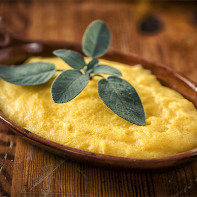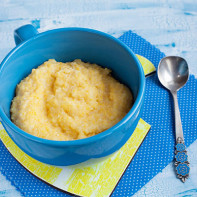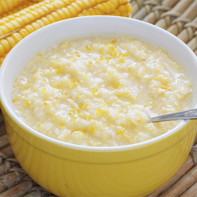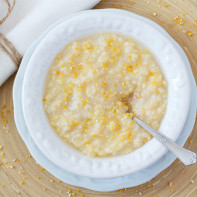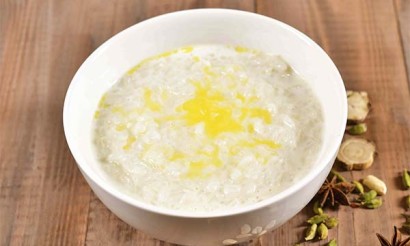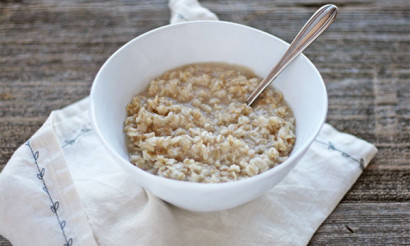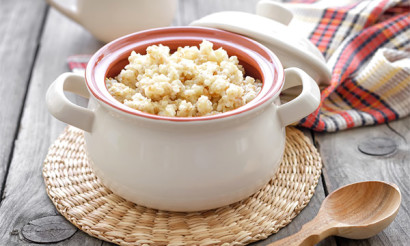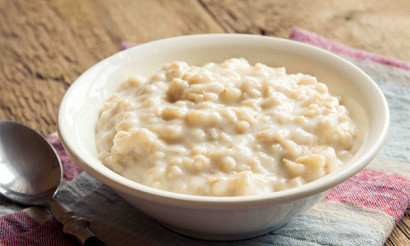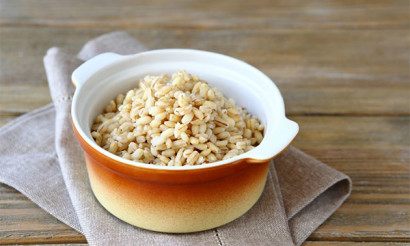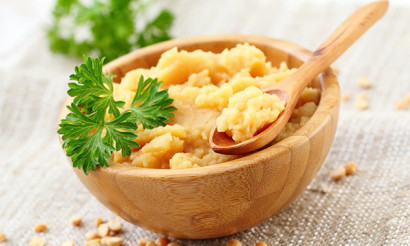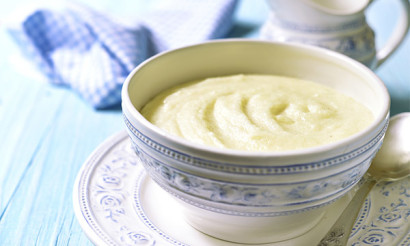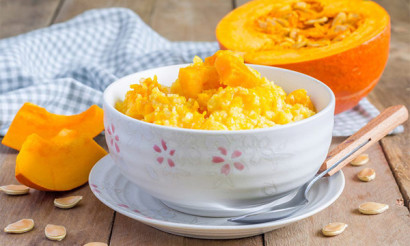Corn porridge: composition, useful properties, recipes
Corn porridge is a delicious and useful dish. It is cooked from groats obtained by grinding corn kernels. Because of this, the finished dish contains almost the same vitamins and minerals as the grain itself. It is nicotinic acid, vitamins A and E, zinc and phosphorus, amino acids, fiber and more. For those who watch their diet, it is important that corn grits belong to the category of whole-grain, because its particles contain the remains of the shell of the grain and its germ. Therefore, it brings maximum benefits.
- Composition and calories
- What are the benefits of corn porridge
- General benefits
- For Women
- For Men
- While Pregnant
- Breastfeeding
- The benefits of corn porridge for a child
- At what age is it possible to give
- How to cook corn porridge for a baby
- Is Corn Porridge Useful for Losing Weight
- Corn gruel in medicine
- For Diabetes Mellitus
- For pancreatitis
- For Gastritis
- For Intestines
- For constipation
- For gout
- For colitis
- For hemorrhoids
- Pri cholecystitis.
- Harm and Contraindications
- Can corn porridge be allergic?
- How to cook Corn Porridge: Recipes
- With water
- With milk
- In a multicooker
- Can we give dogs corn porridge?
- Interesting facts about corn
Composition and calories
Corn kernel itself contains only 97 kcal per 100 g. In corn porridge, depending on the method of cooking (including the addition of milk and butter) calories are much more - in the range of 337-350 kcal per 100 g. However, due to the fact that the product is not completely assimilated, the real caloric value of porridge cooked on water is much lower - up to 100 kcal per 100 g.

Corn grits, depending on the characteristics of the raw material, can contain up to 70% carbohydrates and up to 20% protein, while the rest is fat, vitamins and minerals. It is worth considering the composition of corn grits in more detail:
- Plant and dietary fiber.
- Amino acids.
- B vitamins, including pyridoxine, pantothenic acid, thiamine. They perform an important function - they support the functioning of the central nervous system, ensure the digestive processes, the conversion of nutrients into energy. These vitamins are essential for normalizing the metabolic process, including at the cellular level. In addition, these substances are rightly called beauty vitamins.
- Vitamin E (tocopherol). This substance is one of the most powerful antioxidants. It not only slows down the aging process, but also has an anti-inflammatory effect, improves cognitive function, and has a beneficial effect on vascular health. The vitamin is also useful for the reproductive system - both male and female.
- Phosphorus. This substance stimulates metabolic processes, improves brain function, is responsible for normal muscle tone and bone strength. That's why corn porridge is often recommended for the elderly.
- Magnesium. The element is necessary for the normal functioning of the CNS, it also helps to improve cardiovascular activity. In conditions of chronic stress, in which the modern man lives, you can not do without magnesium, because it helps to smooth out its negative effects.
- Iron. It is difficult to overestimate the importance of this element. It directly affects the level of hemoglobin in the blood, and that, in turn, affects the circulatory system, adjusts its transport function.
- Copper. Along with iron, this trace element provides the synthesis of hemoglobin. In addition, it has an antiseptic effect, and is responsible for elasticity and youthfulness of the skin, because collagen production largely depends on it.
- Zinc has an anti-inflammatory effect. It is also important for the health of the skin, hair and nails. This element is also involved in the reproductive system.
Interestingly, vitamins are concentrated mainly in the germ of the grain. When processed, the grits retain them - unlike other products derived from corn.
It should also be noted that corn grits contain little lysine, which is an important essential amino acid for health. But it has a lot of another useful amino acid - tryptophan. That is why it is often advised to mix corn grits with legumes, because they, on the contrary, have little tryptophan and a lot of lysine.
What are the benefits of corn gruel
General benefits.
This dish is useful in that it energizes for the whole day, without being deposited in the form of fats. It normalizes the intestinal function, with infrequent use eliminates constipation, helps to eliminate toxins, lowers cholesterol, has a beneficial effect on the liver, allows you to strengthen the natural immunity and maintains the health of the cardiovascular system.
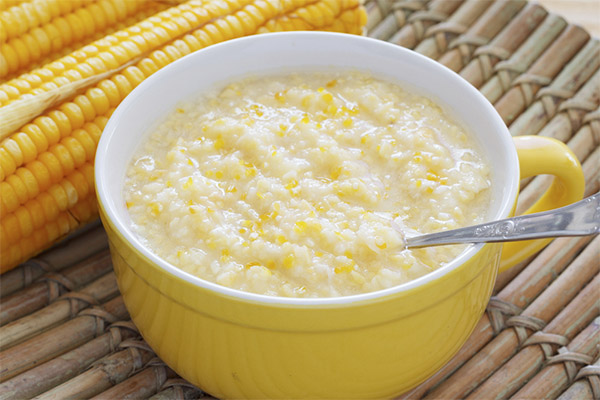
Of course, everything is good in moderation. It is normal for adult men and women to eat 50-70 grams of cereals per dry product (preferably for breakfast or lunch, in the first half of the day). Only then will it be beneficial. It is believed that porridge cooked with low-fat milk is more beneficial than cooked with water, because in this case the dish will contain more nutrients and vitamins, which are also better absorbed.
For women
For the fair sex, corn porridge is good because it contains vitamin E, which is useful for the reproductive system. Also, this dish should be consumed by those who are trying to get rid of excess weight or just keep an eye on the figure.
Finally, corn grits porridge is an important dish not only for health, but also for beauty. It contains zinc, which strengthens hair and nails, as well as antioxidants that make the skin firmer.
For men
For members of the stronger sex, this dish is useful with a high content of zinc, which has anti-inflammatory properties and beneficial effects on the reproductive system. It is also worth using corn gruel to prevent prostatitis.
In addition, as we know, the representatives of the stronger sex due to physiological features often suffer from cardiovascular diseases. Corn grits contain phosphatides - substances belonging to the category of complex lipids. They take part in cholesterol metabolism, that is, they help to clear the walls of blood vessels from the accumulation of bad cholesterol, which prevents the formation of blood clots. Of course, phosphatides are more contained in corn oil, but in cereals they are, which allows us to consider dishes of it a preventive measure against diseases of the cardiovascular system.
When pregnant
For the future mother, the most important element is folic acid. It is necessary for the proper development of the fetus, the formation of the child's nervous system. Its shortage can lead to various abnormalities, as well as the fact that the child will be born with a reduced weight. And for the expectant mother herself, a lack of folic acid leads to increased toxicosis and various health problems. Therefore, in the diet during pregnancy should include corn porridge, which contains large amounts of this acid and B vitamins, as well as phosphorus, zinc and a number of other necessary substances. In addition, such porridge is a low-calorie product.
However, it should be noted that corn porridge should not be eaten by people with high blood clotting. During pregnancy, the clotting often increases, so it is necessary first to take tests and consult a doctor.
It should be remembered that there are certain norms of consumption of this product. During pregnancy, it is 60 g of dried cereal per day, that is, a little more than 1/4 cup.
When breastfeeding
During lactation, corn porridge is useful due to the high content of vitamins and minerals. At the same time, it does not cause flatulence and increased gas because it does not contain gluten, so the baby will also feel quite comfortable. And a young mother, consuming low-calorie porridge, will be able to lose the weight she gained during pregnancy.
The benefits of corn porridge for the baby
Regarding corn porridge for a long time pediatricians did not have a consensus. However, after it became clear that this cereal does not contain gluten, many doctors began to recommend it as one of the first cereal supplements.

Corn porridge is good because it normalizes digestion, eliminates bloating and flatulence, prevents constipation, which often occur with babies (and especially with those who are on artificial feeding). At the same time, porridge contains all the vitamins and minerals that a baby needs for normal development. It has a pleasant taste, in addition, as the baby grows, it can be mixed with vegetables and fruits introduced to complementary foods. It is also recommended to add literally 0.5 tsp of butter to the dish.
At what age can give
Children who are fed artificially, corn porridge is given as early as 4-5 months. Those who are on HBV, such a complementary food is introduced later - at 6-8 months. But always consult a pediatrician beforehand.
You should also adhere to medical standards. Children under the age of 3 years can be given porridge in the amount of 15-20 grams per dry product.
How to cook corn porridge for a baby
Infants cook porridge not from cereals, but from flour, as it is better digested by the digestive system of the baby. For a glass of water take 2 tablespoons of flour, a teaspoon of sugar, salt on the tip of a knife. Pour water into a pot, bring to a boil, pour flour, sugar, salt and cook, stirring with a whisk for 3-4 minutes. At the end of cooking add butter. Babies who are fed artificially can prepare similar porridge based on their usual formula.
Children older than one year are prepared corn porridge with vegetables or fruits, most often with regular milk. Recipes:
- Corn porridge with dried fruit. For a glass of milk or the same amount of cold water, take 2-3 tbsp of finely ground corn grits and a small piece of butter. In summer you can add fresh fruit, in winter - bananas, raisins, dried apricots. Dried fruits are pre-washed and soaked in hot water, and then crushed. Cereals poured into a pot and pour boiling milk or water, put on low heat for 15-20 minutes, stirring occasionally. Then add pieces of fruit, remove from the fire, cover the pot with a towel and insist a little longer.
- Corn porridge with vegetables. The proportions are the same as above. But as additional ingredients, it is recommended to add carrots or pumpkin. They are cut into small cubes, put on a heated frying pan without oil and sprinkle with sugar. Turn off the fire after the vegetables run out of juice. This dressing is added to the groats at the very beginning of cooking porridge.
It is recommended to serve the dish with butter, so that it is better absorbed.
Is Corn Porridge Good for Losing Weight
At first glance, it may seem that corn porridge is a high-calorie product, so it is not suitable for a dietary diet. In fact, this is not the case, corn porridge is one of the best dishes for effective weight loss, which gives a stable effect. The substances contained in this cereal prevent fermentation processes in the intestines and normalize lipid metabolism. In addition, since the proteins are not completely digested, the actual caloric value will be lower than 330-350 kcal per 100 g. If you cook corn porridge on water and without adding butter or raisins, the caloric value will be only 70-80 kcal for the same amount of product.
As already noted, it is best to eat corn porridge in the first half of the day. But in general, it can be eaten in lunch - at this time it will also be well digested. The plant fibers it contains are ballast substances. Thanks to their presence, the process of digestion lasts long enough. This ensures a feeling of fullness for a long period. In addition, the composition of corn porridge allows you to get rid of bad cholesterol and fat deposits.
A mono diet based on corn porridge is popular. Before trying it, it is necessary to consult a nutritionist. The monodiet on corn porridge cooked on water and without sugar is designed for 4 days. During this time, you can lose 3-5 kg, and without harming your health and without feeling hungry. It is clear that if the diet will be combined with physical activity, its effectiveness will be higher.
Corn porridge in medicine
Although corn porridge is generally good for health, it may be contraindicated in some diseases. In each case, it is necessary to consult a doctor before including this dish in your diet.
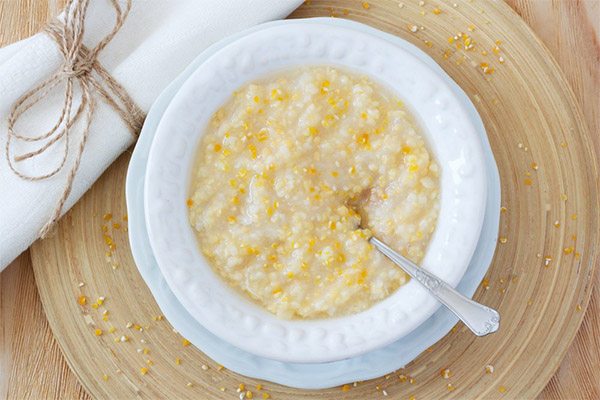
For diabetics.
For diabetics, the glycemic index (hereinafter GI) plays an important role. Foods with a GI below 40 are absolutely safe in this respect, and food with a GI in the range of 40-70 units is used with caution. At the same time, the GI of corn from vegetable (sugar) varieties is quite high - often even higher than 70 (it depends on the variety). But the fact is that the grain contains significantly less carbohydrates than corn grits because other varieties are cultivated. And as a result, corn gruel has a GI of 35-40, depending on the particular type of grits and how they are prepared.
If in type 2 diabetes you consume corn gruel in small amounts, lowering its glycemic index with a protein component (such as boiled chicken breast or lean cottage cheese), this dish will only bring benefits. There are studies proving that the substances in this cereal can lower blood sugar levels. But what you should not do in any case - it is to replace whole-grain cereal porridge with cereals, because they have a significantly higher GI.
The following rules should be observed:
- Cook porridge only with water;
- Reduce the amount of vegetable oil to a minimum, so as not to increase the GI;
- Use only low-fat cottage cheese as a supplement;
- use porridge with carrots, celery and herbs, so it will bring more benefits.
In no case can you exceed the recommended by medical standards amount of corn porridge - no more than 120-180 g. This is quite a filling dish, especially in combination with vegetables. Include it in the diet can be several times a week.
With pancreatitis
Despite all the useful properties, you can not eat corn porridge with pancreatitis. This applies to both acute and chronic forms of the disease. With an exacerbation of all porridge can only oatmeal, and in the remission stage, you need products that will not stimulate the activity of the pancreas. Otherwise, the condition will only worsen.
Gastritis
In the acute form of gastritis, corn porridge is contraindicated. In the chronic form in remission, it is necessary to consult with the attending physician about its introduction into the diet and possible restrictions.
But even if the specialist allows you to include corn porridge in your diet, you will need to exercise caution. In particular, you should not eat it at night, because in this case you may encounter troubles like heartburn, a feeling of heaviness in the stomach and stomach. This can provoke a new exacerbation or prevent a good night's rest.
For the intestines
If there are no serious pathologies like peptic ulcer disease, you can eat corn porridge. It is considered an excellent cleanser that removes toxins from the body. Even if the groats have been boiled for a long time, they remain quite tough particles, which help to remove all unnecessary things.
To maximize the benefits of corn grits porridge, you need to choose the product correctly. In stores, there are several degrees of grinding - fine, medium and large. Contrary to popular belief, the product of coarse grinding is considered more useful for the intestines, because it contains a greater amount of dietary fiber.
For intestinal health, it is recommended to include corn porridge in the menu 2-3 times a week. It can be cooked with various additions of vegetables and soft cheese, but not with such traditional ingredients as fried onions and very salty bryndza, because they just can damage the intestines.
For constipation.
Corn grits are high in fiber. This allows you to normalize digestion, especially since this product combines dietary fiber with starch, which guarantees a milder cleansing. In addition, thanks to its unique composition, this porridge stops the fermentation processes and normalizes the metabolism. All this makes it an excellent prophylactic against constipation. It can be used even when they are of an irregular nature. But if constipation turns into a chronic form, it is necessary to take more radical measures.
To croup with constipation gave the desired effect, follow certain rules:
- Cereals are taken medium or coarse grinding and thoroughly boiled, so that there was no gas formation.
- Cook the porridge exclusively with water, whole milk contributes to constipation.
- Vegetable oil, not butter, should be added to the porridge, preferably olive oil or linseed oil.
Such porridge is eaten for breakfast and not washed down with anything. Only an hour later you can have a glass of herbal tea or juice.
In gout.
This disease is largely caused not only by the accumulation of uric acid, but also by an increase in the concentration of glutamic acid. At the same time, corn grits contain a lot of glutamic acid. For healthy people, it is even useful because it improves memory and cognitive functions. But with gout, corn grits will have to be excluded from the diet precisely because of the presence of this component.
Colitis
This pathology is an inflammatory bowel disease. Since it recommends products that will not irritate the intestines and increase their peristalsis, it is better to give up corn porridge.
In hemorrhoids
In this disease, it is very important to avoid constipation. Therefore, the diet should be varied and balanced in terms of the combination of fats, proteins, carbohydrates, minerals and vitamins. Corn porridge is just part of such a balanced diet. It contains a lot of magnesium and potassium, which increase intestinal peristalsis and remove the very cause of hemorrhoids. It is also useful because it contains a lot of iron, which prevents anemia, and this is very important because hemorrhoids are often accompanied by this pathology.
To get the maximum benefit from corn porridge, in this case it is worth taking grits coarse grinding and serve the dish with vegetables rich in fiber.
For cholelithiasis
In the acute stage of cholecystitis, almost all cereals, except oatmeal, are prohibited. In the remission stage, the menu is expanded, but corn porridge is not recommended, because in disorders of this kind, this product is worse absorbed by the body.
Harm and contraindications
Despite all the above useful properties, corn porridge can harm in some cases. It is contraindicated:
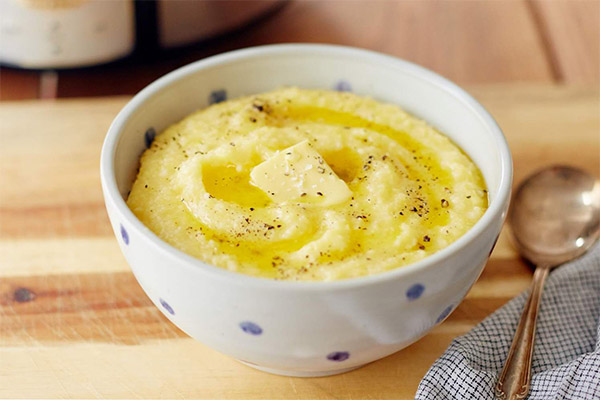
- In acute forms of GI organ pathology, including gastritis, colitis, gastric ulcer, pancreatitis.
- Increased blood clotting, as well as the presence of various vascular problems fraught with thrombosis.
- Chronic constipation.
- Dystrophy and anorexia (because it is extremely low-calorie compared to even buckwheat).
If even there is no diagnosed gastrointestinal disease, but there is increased acidity of the gastric juice, then this product should be used with caution.
Can corn gruel be allergic?
Corn grits do not contain gluten (a protein that is present in almost all cereals), so cooked from it porridge can be included in the diet of people suffering from celiac disease, that is intolerance to gluten. Gluten is sometimes called an allergen. But in this situation it would be more correct to speak about intolerance accompanied by digestive disorders.
In some cases, corn grits can cause food allergies, so doctors believe that children under the age of 6 months should not be given them.
How to cook corn porridge: Recipes
There are different ways to cook porridge - in water or milk, with dried fruits, cheese, vegetables. Below we will consider the basic options.
With water
For 150-200 g of groats of any grind need 2-2.5 cups of water (the amount can vary, the main thing is to keep the proportion - 1:2.5), 30 g of butter, salt to taste. Sieve the groats through a sieve and rinse thoroughly under the faucet. At the same time, a thick-walled pan with water placed on the fire, bring to a boil, pour the groats and stir the resulting mass, until it boils again. Then turn down the heat to minimum, add salt, and cover tightly with a lid. Cook the porridge will need at least 25-30 minutes more. Stir constantly, as the porridge quickly burns. In the cooked porridge add butter.
If various additives are planned - tomatoes, cheese, sweet peppers - they are put immediately after the porridge is removed from the heat, and together with them insist another 5-10 minutes.
With milk
To cook porridge with milk take 0.6 liters of water, 2 glasses of milk, 30 grams of butter, sugar to taste and a little salt.
Pour water into a thick-wall saucepan, add salt, bring to boil, then pour the pre-washed groats. Cook the porridge for about 15 minutes over low heat, stirring constantly. While the water evaporates, separately bring the milk to a boil and immediately pour it into the porridge. After that, sugar, salt and pieces of butter are added to it.
In a multicooker
The proportions for cooking in a multicooker are slightly different - here you take 2.5 cups of water per 200 g of groats, which are also pre-washed. Pour the groats into the bowl of the multicooker, add butter and salt, pour water, close with the lid. Boil with the mode designed for cooking buckwheat. The timer will signal the readiness of the dish. Lovers of thicker porridge can keep it in the heating mode for another 15-20 minutes.
Can we give corn gruel to dogs?
This porridge is not given to dogs at once for several reasons.
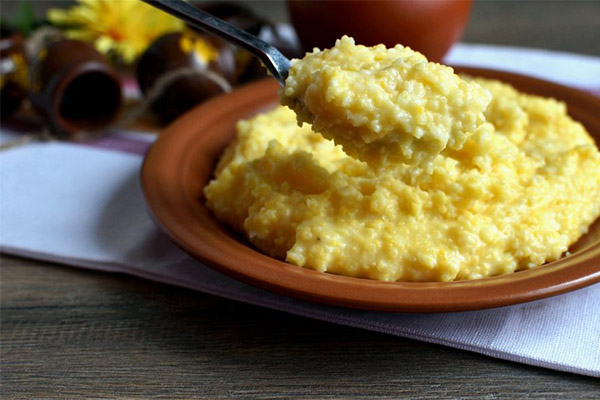
- First, it is a low-calorie product - the pet will be satiated quickly, but the effect is unlikely to last.
- Secondly, it does not contain all the substances that dogs need, in the case of animals, it is "empty".
- Thirdly, corn porridge is poorly digested by dogs (by the way, grains of this cereal are often not digested at all), it moves slowly through the gastrointestinal tract. If the pet already has digestive problems, it will aggravate the situation. In particularly severe cases, it can even cause such a dangerous pathology as intestinal congestion.
Interesting Facts about Corn
Corn is one of the most interesting grains and, by the way, the only one whose birthplace is America. It was first cultivated there over 5,000 years ago! Archaeological excavations however show that back then it was a plant with very small cobs, up to 5-7 cm long. However, its origin is still not clear because no wild corn has been found in the nature. Moreover, modern varieties cannot go wild in principle because their grains do not fall to the ground to give sprouts.
Many dishes are prepared from corn grits. From the product of coarse grinding - mainly various porridges, including mamaliga, which is so dense that it can be cut like bread. It does not have a pronounced taste and can be served with salty varieties of cheese, tomatoes, herbs.
Corn grits are also used to make flakes and sticks. Although they are not harmful, they are not useful either, because the cooking process removes the germ that contains vitamins and minerals.
«Important: All information on this site is provided for informational purposes only purposes only. Consult with a health care professional before using any of our recommendations. should be consulted with a health care professional before any recommendations are used. Neither the editors nor the authors shall be liable for any possible harm caused by materials."




